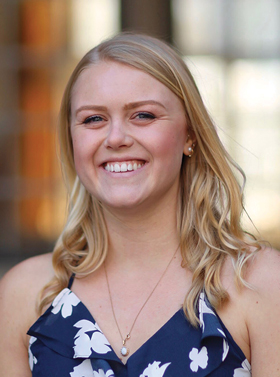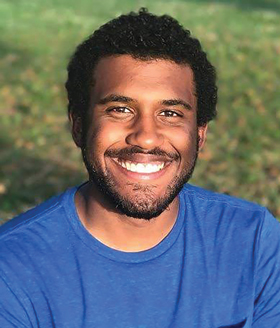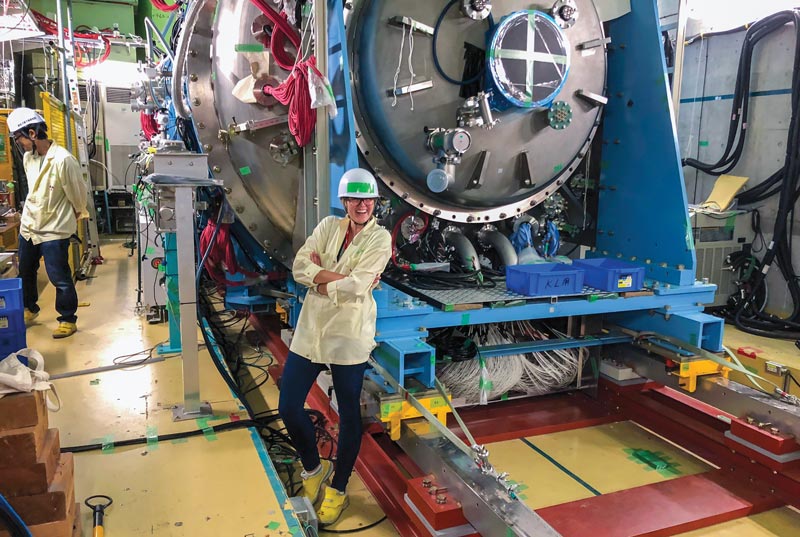WELCOME TO J-PARC
Spring
2019
Feature
WELCOME TO J-PARC
Kristin Dona, SPS Vice President, University of Michigan, and Noah McNeal, SPS President, University of Michigan

 It’s a warm evening and the sun is setting low on the horizon. Mountains off in the distance. Freshly plowed sweet potato fields. Cicadas buzzing in the trees around us. After a long day working underground with the detector, we’ve just biked past the entrance gates to J-PARC, bowing at the security guards and rolling past the big lettering: 日本原子力研究所. Behind us, the Japan Atomic Energy Research Institute is a sprawl of gray research complexes with accelerators weaved-in together with the trees. The light is still red as we watch the cars pass in front of our favorite conbini, 7-Eleven, home to a world’s supply of sushi, onigiri, and anpan.
It’s a warm evening and the sun is setting low on the horizon. Mountains off in the distance. Freshly plowed sweet potato fields. Cicadas buzzing in the trees around us. After a long day working underground with the detector, we’ve just biked past the entrance gates to J-PARC, bowing at the security guards and rolling past the big lettering: 日本原子力研究所. Behind us, the Japan Atomic Energy Research Institute is a sprawl of gray research complexes with accelerators weaved-in together with the trees. The light is still red as we watch the cars pass in front of our favorite conbini, 7-Eleven, home to a world’s supply of sushi, onigiri, and anpan.
“東海村とJ-PARCへようこそ,” or “Welcome to the village of Tokai and to J-PARC.”
We spent the summer of 2018 living and working in Japan on the KOTO experiment at the Japanese Proton Accelerator Complex (J-PARC). KOTO is a high energy particle physics experiment that hopes to probe the Standard Model by measuring the branching ratio of the ultrarare decay of the , which, according to Standard Model predictions, is expected to occur once in every 30 billion decays. The motivation behind observing this decay is to measure CP violation, which can help us understand the matter/antimatter asymmetry in the universe. CP violation can be understood by the idea that the laws of physics should stay the same if we switch matter with antimatter (charge symmetry, or C-symmetry) and if we “look into a mirror,” swapping right with left (parity symmetry, or P-symmetry). Put C-symmetry and P-symmetry together and you get CP-symmetry (or CP violation). CP violation occurs in the decay at the heart of the KOTO.
Having worked with the Michigan branch of the KOTO Collaboration (led by Professor Myron Campbell) for several years prior to our time in Japan, we delighted in the opportunity to live and work at the experiment site as undergraduate research assistants. Our overarching task throughout the summer was to disassemble our experiment’s detector to prepare it for hardware upgrades that will help the KOTO experiment reach its preliminary goal of observing one single decay. This was a large undertaking that required carefully detaching and documenting hundreds of cables, moving hundreds of pounds of hardware, and enduring the heat of the 100-degree Japanese summer. To handle this enormous task, we worked in a large team consisting of two other Michigan undergraduates and an assortment of Japanese graduate students, research scientists, and professors.
We enjoyed getting to work in person with the collaborators from Japanese institutions, whom we had met only over video calls prior to this. By working under the guidance of our Japanese collaborators, we were able to intimately experience the reality that international science is broadly based on the concept of the same goals but different methods. Work hours, ways of communicating, and day-to-day accomplishments were all different than we were used to back in Michigan but were just as effective. Each morning, daily meetings were held to discuss our work for the day. At these meetings we would often be told that our anticipated work day would last until 7 p.m. or that our work was not necessary for the day, so our schedule would change depending on the status of the experiment during its disassembly. In addition to limited communication about our work in advance, communication methods with our colleagues were also less direct than we were used to. When asking questions, collaborators would prefer not to say no but rather give begrudging yeses that we learned actually meant no. Another trend that we found surprising was that interpersonal relationships were different from those in Michigan. As Japan has a different work culture than the United States, our Japanese colleagues had a more noticeable work hierarchy as well as a stricter work–life separation when compared with the States. At the same time, we were all able to enjoy ourselves as a team when the group went out to dinner to celebrate big occasions like the end of data taking.
Being part of a large international collaboration is a unique experience. These collaborations allow for the production of ideas from people with different backgrounds. Each person’s individual way of thinking and variation in how they were taught results in a great variety of thought. This permits scientific accomplishments that would be unfathomable by a team from a single institution.
Overall, our time in Japan allowed us to personally experience the inner workings of an international scientific collaboration while also learning in the local community and engaging in great science. 
